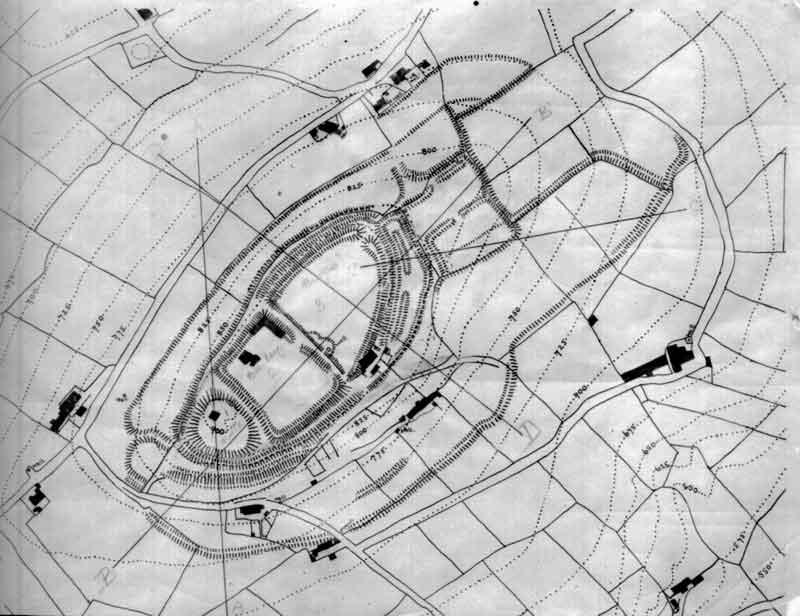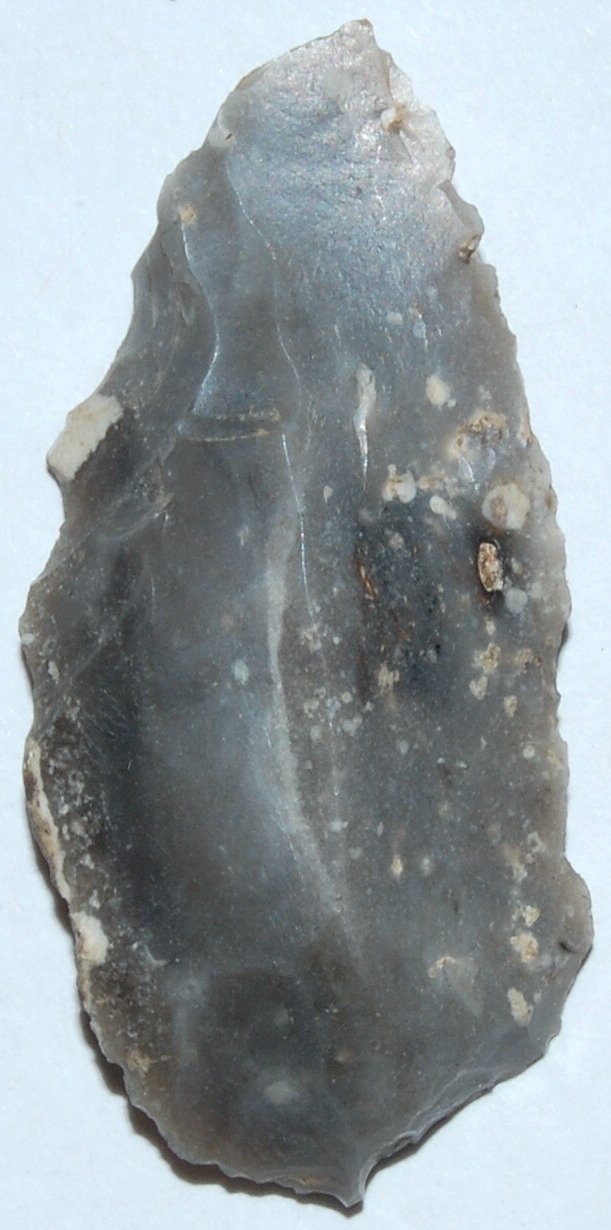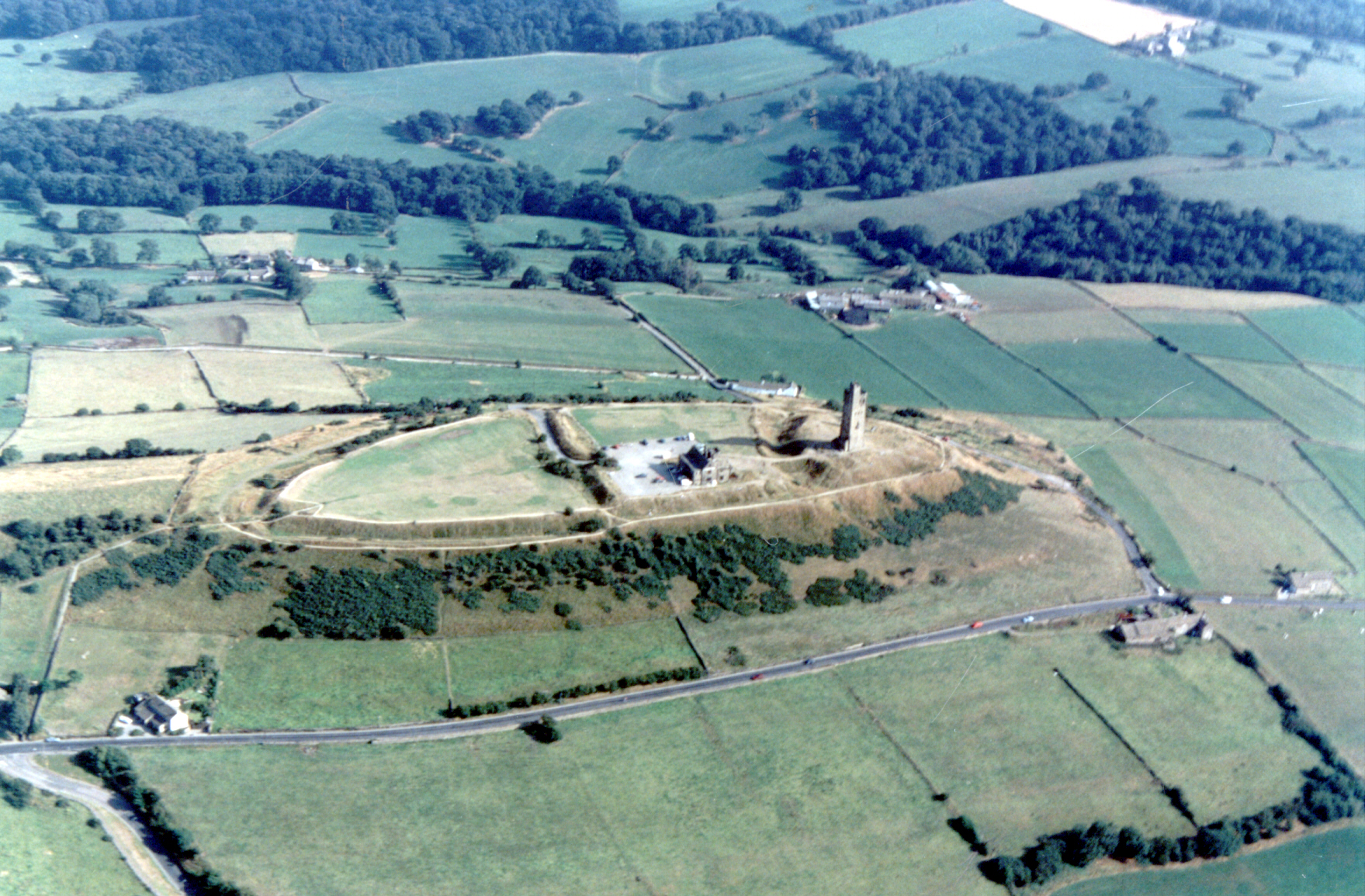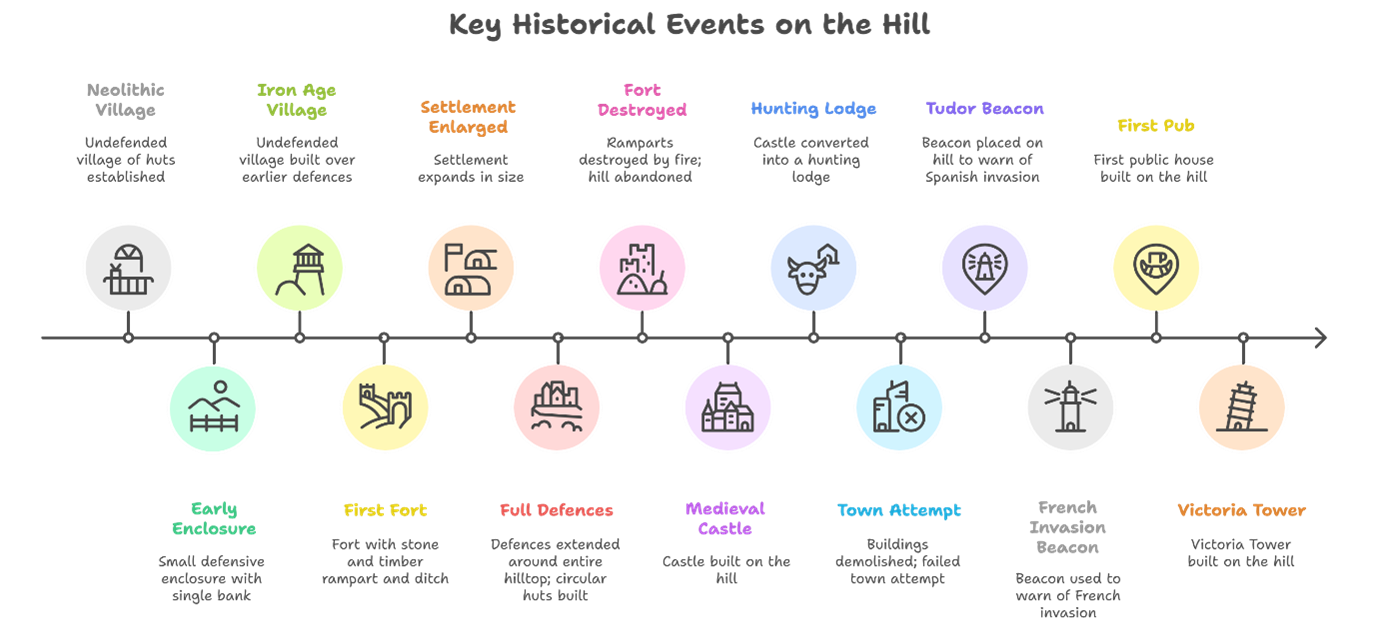Castle Hill in Almondbury is Huddersfield’s most important archaeological site, used by people for over 4,000 years. Early settlers lived in round huts and used simple stone tools. They kept animals, farmed small plots, and hunted in the surrounding woodland. Scientific evidence shows this community lived here around 2000 BCE.
From about 1000 BCE, as the climate worsened and land became harder to farm, people began defending their settlements. At Castle Hill, they built a large earth bank with a single guarded entrance, likely topped with wooden fencing or thorn barriers. These defences were added to over time, showing the area was home to a well-organised and sizeable community.
Over time, the fort at Castle Hill became more complex. Its banks and ditches were rebuilt and extended over several centuries. The size and scale of the work required a large, organised community and suggest that Castle Hill was a centre of some importance in the local area. During archaeological excavations, researchers found a mixture of round and rectangular wooden buildings inside the fort.
It is still unclear whether these buildings belonged to new groups of settlers moving into the area or to local people who gave up living in scattered farms to move into this hilltop stronghold.
The tower we see on Castle Hill today is called Victoria Tower and was opened in 1899.



